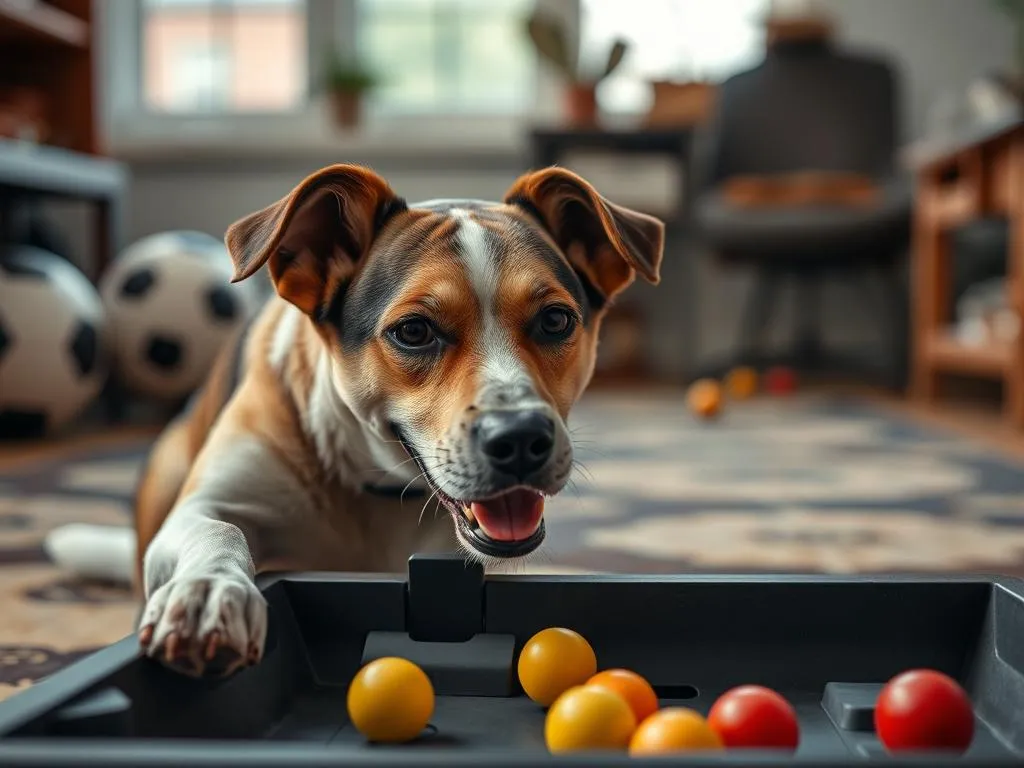
Keeping our furry friends mentally and physically stimulated is essential, especially when confined indoors. Indoor dog games not only prevent boredom but also help curb anxiety and destructive behavior often seen in dogs that lack stimulation. Whether it’s raining outside or if you live in a small apartment, these games provide the perfect solution for keeping your pup engaged.
Understanding Your Dog’s Needs
Physical Exercise
Dogs, like humans, require daily physical activity to stay healthy. Regular exercise helps maintain a healthy weight, supports cardiovascular health, and promotes overall well-being. While outdoor walks are a great way to provide physical activity, indoor dog games can serve as an excellent substitute when outdoor options are limited. Engaging in fun games like fetch or tug-of-war can burn off energy and keep your dog fit.
Mental Stimulation
Mental challenges are just as important as physical exercise for dogs. Dogs are intelligent creatures that thrive on problem-solving and learning. Engaging their minds through indoor dog games can alleviate boredom and prevent behavioral issues. Activities that require them to think, like puzzle toys or scent work, can significantly enhance their cognitive function and emotional health.
Breed-Specific Considerations
Different breeds have varying energy levels and intelligence. Active breeds like Border Collies or Labrador Retrievers may require more intense activities, while smaller, less active breeds might be satisfied with less vigorous games. Tailoring your indoor dog games based on your dog’s breed and personality ensures that they receive the appropriate level of stimulation.
Types of Indoor Dog Games
Interactive Toys
Puzzle Toys
Puzzle toys are designed to challenge your dog mentally. These toys typically require dogs to figure out how to get a treat out of them by solving a puzzle. Benefits include keeping your dog occupied and providing an enjoyable challenge. Some popular options include the Outward Hound Hide-A-Squirrel and the Nina Ottosson by Outward Hound puzzle games.
Treat Dispensers
Treat dispensers are another excellent way to keep your dog engaged. These toys release treats as your dog plays with them, adding an element of fun to their playtime. Dogs love the reward they receive, making them more likely to engage with the toy. Brands like PetSafe and Kong offer highly-rated treat dispensers.
Hide and Seek
Playing hide and seek with your dog is a simple yet effective way to engage them. To play, have your dog sit and stay while you hide somewhere in the house. Once you are hidden, call your dog’s name and let them find you. This game not only stimulates their mind but also strengthens your bond with them.
Tug-of-War
Tug-of-war is a classic game that can provide both physical exercise and mental engagement. It’s essential to establish some ground rules to make this game safe and enjoyable. Ensure that your dog knows commands like “drop it” or “leave it” to maintain control during play. This game promotes bonding and helps reinforce the idea of sharing and taking turns.
Fetch in a Hallway
You don’t have to go outside to play fetch! If you have a long hallway, it can serve as a perfect area for a game of fetch. Use a soft toy to minimize the risk of damage and ensure the area is clear of obstacles. This adaptation of fetch allows your dog to run and retrieve indoors, burning off energy while minimizing potential hazards.
Scent Work Games
Scent work is an excellent way to engage your dog’s natural instincts. Dogs have a heightened sense of smell and enjoy using it to locate hidden treats. Start by hiding treats around the room and encouraging your dog to find them. You can gradually increase the difficulty by hiding treats in more challenging spots. This type of play not only provides mental stimulation but also enriches their environment.
Agility Training
Setting up a mini agility course indoors can be a fun and challenging activity for your dog. Use household items like chairs, cushions, and broomsticks to create jumps or tunnels. Teach your dog to navigate through the course, rewarding them with treats and praise for completing it. This activity is excellent for physical exercise and mental engagement.
Creating a Safe Indoor Play Environment
Space Considerations
Selecting the right area for play is crucial. Ideally, you want a space that is clear of any hazards such as sharp objects, breakables, or anything that could cause injury. Consider designating a specific room or area in your home as a play zone to make clean-up easier and ensure your dog can play without interruptions.
Dog-Proofing Your Home
Dog-proofing is essential to maintain a safe environment during playtime. Secure loose wires, remove hazardous items, and store away anything that could be harmful if chewed or swallowed. Additionally, supervising your dog during playtime is critical to ensure they stay safe and out of trouble.
Tips for Engaging Your Dog
Varying Activities
To keep your dog interested, it’s important to vary the activities you engage in. Rotating games prevents monotony and keeps your dog mentally stimulated. Introduce new games gradually, allowing your dog to adapt and learn. This variety not only keeps playtime exciting but also challenges your dog in different ways.
Encouraging Positive Behavior
Using positive reinforcement is crucial when engaging your dog in play. Reward them with treats and praise when they exhibit good behavior during games. Understanding your dog’s cues is important to adjust your approach as needed. If they seem disinterested, try to switch to a different game or activity they enjoy more.
Incorporating Training
Combining playtime with obedience training is an effective way to maximize engagement. While playing, you can practice commands like “sit,” “stay,” or “come.” This approach not only reinforces training but also makes it more enjoyable for your dog when they associate commands with fun activities.
Conclusion
Engaging in indoor dog games is essential for maintaining your dog’s physical and mental health. From interactive toys to agility training, there are countless ways to keep your pup active and happy indoors. By understanding their needs and tailoring activities accordingly, you can create a stimulating environment that enriches their lives. So, gather your supplies, try out different games, and enjoy the bond you create with your furry friend through play!
FAQs
How much indoor playtime does my dog need?
The amount of indoor playtime varies based on your dog’s age, breed, and energy level. Generally, aim for at least 30 minutes to an hour of interactive play each day.
Can indoor games replace outdoor exercise?
While indoor dog games can supplement outdoor exercise, they shouldn’t completely replace it. It’s important for dogs to experience outdoor activities for mental health and socialization.
What if my dog loses interest in a game?
If your dog loses interest, try rotating the games and introducing new activities. Dogs can get bored, so keeping things fresh is key to maintaining their enthusiasm.
Are there specific games for older dogs or puppies?
Yes, older dogs may benefit from gentler games that require less physical exertion, while puppies often enjoy play that encourages exploration and learning. Tailor the games to suit their energy levels and abilities.









